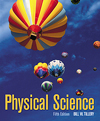Astronomy is an exciting and mind-expanding physical science that has fascinated
and intrigued people since the beginnings of recorded history. Ancient civilizations
searched the heavens in wonder, some recording on clay tablets what they observed.
Many religious and philosophical beliefs were originally based on interpretations
of these ancient observations. Today, we are still awed by the heavens and space,
but now we are fascinated with ideas of space travel, black holes, and the search
for extraterrestrial life. Throughout history, people have speculated about
the universe and their place in it and watched the sky and wondered (Figure
16.1). What is out there and what does it all mean? Are there other people such
as ourselves on other planets, looking at the star in their sky that is our
sun, wondering if we exist? Until about thirty years ago progress in astronomy was limited to what
could be observed and photographed. Developments in astronomy, in technology,
and in other branches of science then began to provide the details of what is
happening in the larger expanses of space away from Earth. These developments
included understandings about nuclear reactions and implications about what
must be going on inside a star and the nature of the light emitted; new data
made available from the development of infrared telescopes, radio telescopes,
and X-ray telescopes; and detailed spectral analysis of light from the stars.
All of these developments and the discovery and theoretical meaning of pulsars,
neutron stars, and black holes began to fit together like the pieces of a puzzle.
Theoretical models emerged about how stars evolve, about what galaxies are and
how they evolve, and eventually, about the explosive beginnings of the universe
and the chain of events that led to the formation of the Sun and Earth. This
chapter is concerned with these topics, beginning with historical attempts to
understand how the stars are arranged in space. The chapter concludes with theoretical
models of how the universe began and what may happen to it in the future. |



 2002 McGraw-Hill Higher Education
2002 McGraw-Hill Higher Education

 2002 McGraw-Hill Higher Education
2002 McGraw-Hill Higher Education